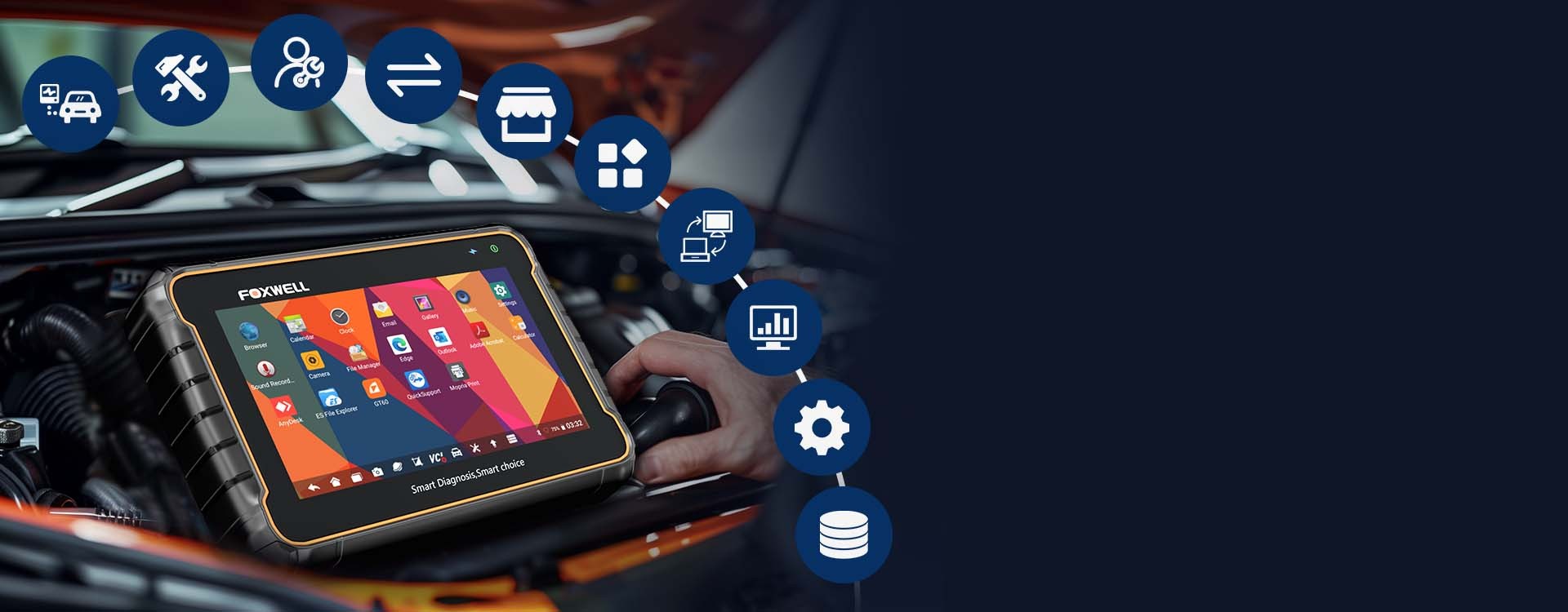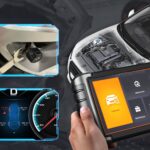When your car won’t start, it can be a frustrating and inconvenient experience. One of the first thoughts for many car owners is whether an OBD2 scanner can help diagnose the issue. The question, will an OBD2 scanner work if the car won’t start?, is a common one. The answer is generally yes, an OBD2 scanner can still be a valuable tool, but with certain limitations you should be aware of. Let’s delve into how an OBD2 scanner functions in a no-start situation and what it can and cannot tell you.
As long as your car’s battery has sufficient charge to power the vehicle’s electronic systems, including the diagnostic port, an OBD2 scanner should be able to connect and communicate with your car’s computer. This means it can potentially retrieve diagnostic trouble codes (DTCs) and provide access to live data, even if the engine isn’t running. However, the effectiveness of the scanner in pinpointing the exact cause of a no-start issue depends heavily on the nature of the problem.
It’s important to understand that an OBD2 scanner primarily reads electronic data related to the engine, emissions, and electrical systems. If the reason your car won’t start is due to a completely dead battery preventing any power to the car’s systems, then the OBD2 scanner will not function. Similarly, for purely mechanical failures, such as a seized engine or a completely broken starter motor, the OBD2 scanner’s insights might be limited. It’s designed to detect electrical and electronic faults that the car’s computer can register.
Decoding the Reasons Behind a Car That Won’t Start
To effectively use an OBD2 scanner, it’s helpful to understand the common culprits behind a car failing to start. This knowledge will guide you in interpreting the scanner’s readings and deciding on the next steps. The common reasons can be broadly categorized as follows:
Battery Problems:
- Dead or Weak Battery: This is perhaps the most frequent cause of a no-start condition. A dead battery simply cannot provide the necessary electrical power to crank the engine or operate the vehicle’s systems. A weak battery might have enough charge for some electrical functions but lack the amperage needed to start the engine, often indicated by dim lights or rapid clicking sounds when you turn the key.
- Corroded or Loose Battery Terminals: Even with a good battery, corrosion buildup on the terminals or loose connections can impede the flow of electricity, leading to starting problems. These issues can restrict power delivery to the starter and other essential systems.
Starter Motor Malfunction:
The starter motor is the component responsible for turning the engine over to initiate combustion. If the starter motor fails, the engine won’t crank, even if the battery and other electrical systems are functioning correctly. Since the starter is primarily a mechanical component, its failure often doesn’t directly trigger OBD2 codes.
Fuel Delivery Issues:
- Fuel Pump Failure or Blockage: The fuel pump is crucial for supplying fuel from the tank to the engine. A failing fuel pump or a blockage in the fuel lines or fuel filter will prevent fuel from reaching the engine, thus preventing it from starting.
- Empty Fuel Tank or Contaminated Fuel: While seemingly obvious, running out of fuel is a common reason for a no-start. Similarly, contaminated or degraded fuel can also prevent the engine from starting or running properly.
Ignition System Problems:
Issues within the ignition system, such as faulty ignition coils, a malfunctioning distributor, or worn-out spark plugs, can disrupt the combustion process and prevent the engine from starting. Problems in the ignition system can sometimes trigger OBD2 codes related to misfires or crankshaft position sensor issues, as the engine’s computer monitors these functions.
Sensor Malfunctions:
Modern engines rely on a network of sensors to operate correctly. Critical sensors like the camshaft position sensor and crankshaft position sensor provide essential timing information to the engine control module (ECM). If these sensors fail, the ECM might prevent the engine from starting to avoid potential damage. Fortunately, sensor failures are often detectable by an OBD2 scanner, which can display specific fault codes.
Leveraging an OBD2 Scanner for No-Start Diagnosis
If your car won’t start, using an OBD2 scanner like the Foxwell NT726 can significantly aid in diagnosing the problem, particularly if the issue is electrical or sensor-related. The Foxwell NT726, with its comprehensive diagnostic capabilities, including system-wide scans, live data streaming, and code reading, is a powerful tool for this purpose.
Before you connect your scanner, ensure your car battery has at least some charge. OBD2 scanners draw power from the car’s battery, so a completely dead battery will prevent the scanner from working. If you suspect a dead battery, you might need to jump-start the car or use a battery maintainer before proceeding.
Here’s how to use an OBD2 scanner to diagnose a no-start condition:
- Connect the Scanner: Locate the OBD2 port, typically found under the dashboard on the driver’s side. Plug the Foxwell NT726 or your chosen scanner into this port securely.
- Turn Ignition to “ON”: Turn your ignition key to the “ON” position. This activates the car’s electrical systems and allows the scanner to communicate with the vehicle’s computer. Do not start the engine.
- Read Trouble Codes: Navigate to the “Read Codes” or similar menu option on your scanner. The scanner will then retrieve and display any stored diagnostic trouble codes (DTCs). The Foxwell NT726 often provides detailed descriptions of these codes, which can point you towards the problematic system or component. Look for codes related to the engine, transmission, or sensors. Codes related to the fuel system, ignition system, or sensors like the crankshaft or camshaft position sensors are particularly relevant in no-start scenarios.
- Analyze Live Data: Utilize the “Live Data” or “Data Stream” function on your NT726. This feature allows you to monitor real-time data from various sensors and systems. In a no-start situation, relevant data to observe includes:
- Fuel Pressure: Check if the fuel pressure readings are within the normal range. Low or no fuel pressure could indicate a fuel pump issue or blockage.
- Crankshaft/Camshaft Position Sensor Readings: Verify that these sensors are providing signals as you attempt to start the car. Lack of signal can indicate sensor failure.
- Throttle Position: Ensure the throttle position sensor is reading correctly.
- Ignition Timing: Check if the ignition timing parameters are within acceptable limits.
Analyzing live data can often reveal anomalies that are not directly indicated by trouble codes, helping you pinpoint the root cause.
- Clear Codes and Re-test (After Repairs): After diagnosing and addressing the identified issue, use the scanner to clear the stored trouble codes. This step is important to turn off the check engine light and to verify if the repair was successful. If the car still doesn’t start after your initial repair attempt, rescan for new or remaining codes to guide further troubleshooting.
Alternative Diagnostic Methods When You Can’t Use an OBD2 Scanner
While OBD2 scanners are incredibly helpful, there are situations where they might not provide the answer, or you might not have one available. In such cases, you can employ alternative diagnostic methods:
- Battery Voltage Check: Use a multimeter to measure the battery voltage. A fully charged battery should read approximately 12.6 volts. If the voltage is significantly lower, the battery might be the issue. Also, visually inspect the battery terminals for corrosion and ensure they are tightly connected. Clean any corrosion with a wire brush and ensure connections are secure.
- Listen for Fuel Pump Activation: When you turn the ignition to the “ON” position (before starting), listen carefully for a brief whirring sound coming from the fuel tank area. This sound indicates the fuel pump is priming. If you don’t hear this sound, the fuel pump might be faulty.
- Starter Motor Power Test: Use a multimeter or test light to check if the starter motor is receiving power when you turn the key to the start position. If power is reaching the starter but it’s not engaging, the starter motor itself could be the problem.
- Spark Test: If you suspect an ignition issue, use a spark tester to check if the spark plugs are firing correctly. Connect the tester between the spark plug and the spark plug wire and check for spark while cranking the engine. No spark indicates a problem in the ignition system.
Preventive Maintenance to Minimize Starting Problems
Regular preventive maintenance can significantly reduce the likelihood of encountering no-start issues. Here are some key maintenance tips:
- Maintain Battery Health: Regularly inspect your battery terminals for corrosion and clean them as needed. Have your battery tested periodically, especially as it ages (typically every 3-5 years), and replace it proactively before it fails unexpectedly.
- Fuel System Care: Use good quality fuel and replace the fuel filter according to your vehicle’s maintenance schedule. This helps prevent fuel delivery problems.
- Ignition System Maintenance: Replace spark plugs, ignition coils, and distributor caps (if applicable to your vehicle) at the intervals recommended in your owner’s manual. This ensures a healthy ignition system.
- Sensor Inspection: While not always part of routine maintenance, be aware of symptoms like rough idling or engine misfires, which could indicate sensor issues. Address these promptly to prevent more serious problems.
In Conclusion
Will an OBD2 scanner work if the car won’t start? Yes, in many cases, an OBD2 scanner is a valuable first step in diagnosing why your car won’t start, particularly for electrical and sensor-related problems. Scanners like the Foxwell NT726 can provide crucial insights through trouble codes and live data. However, it’s essential to remember that OBD2 scanners have limitations. They are less effective for diagnosing purely mechanical issues like starter motor failures or certain fuel delivery problems. When an OBD2 scanner doesn’t provide a clear answer, or if you don’t have access to one, alternative diagnostic methods are available. And if you’re unsure or uncomfortable with DIY diagnostics, seeking professional help from a qualified mechanic is always the best course of action to ensure accurate diagnosis and repair.
FAQs
Can I use a code reader if my car won’t start?
Yes, you can typically use a code reader if your car won’t start, provided the car’s battery has enough charge to power the electrical systems, including the OBD2 port.
Do you have to start the car to use the OBD2 scanner?
No, you do not need to start the car to use an OBD2 scanner. Simply turning the ignition to the “ON” position provides power to the necessary systems for the scanner to function.
Can an OBD scanner detect starter problems?
OBD scanners are not designed to directly detect mechanical starter motor problems. However, they might detect related electrical issues or voltage drops that could be associated with a failing starter system. For direct starter diagnosis, other methods like voltage testing at the starter are more effective.


